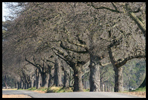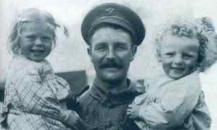AustLit
-
-
The best known Australian soldier writer of World War I might have been 'Banjo' Paterson, who served with the AIF in Palestine. However, Paterson didn't in fact write a great deal during his time in the army, and most of his creative output was confined to the soldiers' magazine the Kia-Ora Coo-ee, which first appeared in March 1918, towards the end of the war. So, whilst several of Paterson's World War I poems were later to become well known, and in more recent times have appeared widely in anthologies, he never really became one of the voices of World War I, as he had been during the Boer War. Another prominent Australian writer who served during World War I was Miles Franklin, who in 1917-1918 worked as a volunteer at a Serbian military hospital. However, she too wrote very little during the war years and her three war related works remain unpublished.
For the most part the soldier writers of World War I were a mix of 'unknowns' and 'lesser knowns'. Quite a few were journalists and school teachers, who had a background in literature and writing prior to enlisting. But the majority appear to have had little in the way of formal literary education. Many wrote only a handful of works, and for the most part we don't hear of them again after war's end. Many also wrote under a writing name, which means that in many instances, their identities are now unknown. A good few of the soldier authors came to light via the soldiers' magazines, such as Aussie and the Kia-Ora Coo-ee, which began appearing in the final years of the war. However many also contributed to newspapers and magazines back in Australia, and during the war years a surprising number also published small volumes of poems and short stories, which in many cases also included brief accounts of their wartime experiences.
Of course, there were a small number of soldier authors, whose wartime writing in effect launched their literary careers. Poet Leon Gellert, whose much lauded selection Songs of a Campaign went through several wartime editions, is perhaps the most notable. However, similar examples are few and far between. Then there were others who would rise to prominence in the decade or so after the war, but who appear to have written little, if at all, during their time in the armed forces. Three good examples here are Ion Idriess, Arthur Upfield and Frank Clune, all of whom were to become major Australian popular fiction authors in the 1930s and 1940s.
Then there are the soldier writers whose wartime works remained forgotten for years after war's end, to be discovered by biographers and researchers over the ensuing decades. In most instances these works involve personal accounts of the war, which have been pieced together from wartime diaries. But they sometimes include poems and other creative pieces written during the war which had never been previously published.
Perhaps the best known soldier writer of World War I among present day readers is Frederic Manning, who was living in England when war broke out, and subsequently served in the British Army on the Western Front. Manning's 1929 Novel, The Middle Parts of Fortune, has for some time been part of the canon of World War I literature. However, Manning would have been little known in Australia during the war years. Indeed, even after The Middle Parts of Fortune was published in 1929, as a long term expatriate, he seems to have attracted little attention in Australia outside literary circles. It has perhaps only been in the last decade or so, with the more recent republications of The Middle Parts of Fortune, that he has become more familiar to Australian readers.
You might be interested in...





